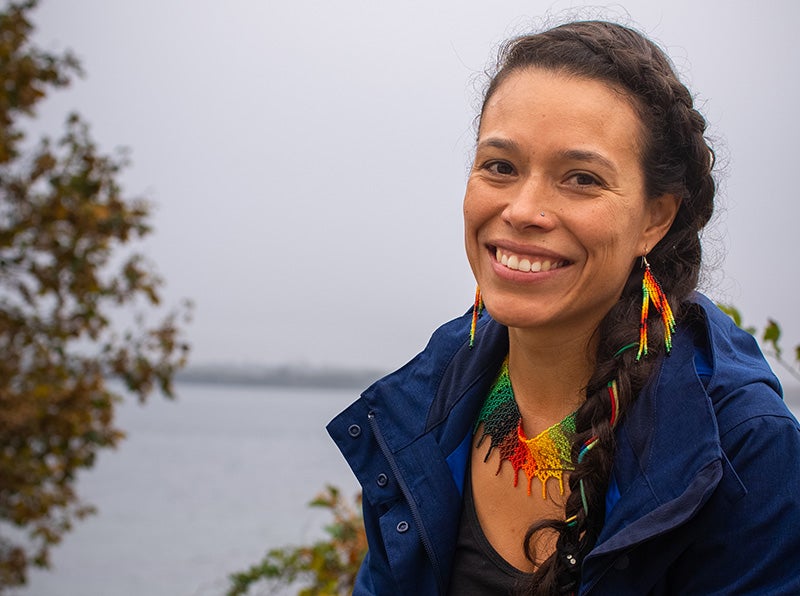Fenix Garcia Tigreros, Assistant Professor of Oceanography
By Alexander Castro

Rhode Island is one of the nation’s flatter states, so it’s certainly a change of pace for Fenix Garcia Tigreros, the newest assistant professor at GSO. She recalls the slogan of her native Bogotá, Colombia: “We like to say Bogotá is 2,600 meters closer to the stars. Not really sure how that translates to feet, but it is pretty high.”
Perched in the Andes, Bogotá is far from the ocean. But Colombia itself isn’t, with its coastline hugged by both the Caribbean Sea and Pacific Ocean. Thanks to her father living near the Caribbean Coast in the Sierra Nevada de Santa Marta, the highest coastal mountain range on earth, Garcia Tigreros experienced both surf and sky as a kid.
These experiences proved formative when she chose to study chemistry at Binghamton University, where, “All of my undergraduate research projects focused in environmental chemistry,” Garcia Tigreros says. It was through a summer internship at the Smithsonian Institution that she first took serious note of oceanography.
“I really like being out[side],” Garcia Tigreros says. “In chemistry, you’re mostly inside a lab.”
The fate of an oceanographer is less sequestered. There’s still plenty of lab work, of course, but Garcia Tigreros notes the scenic perks like “amazing research cruises.” The cruises may be scenic, but Garcia Tigreros is still looking at the water like a chemist, trying to better understand the dynamics of oceanic methane and CO2 and their relation to climate change.
Take gas hydrates, where the greenhouse gas methane has accumulated over thousands of years along continental shelves. For her Ph.D. at the University of Rochester, Garcia Tigreros showed “lots of interest in where that methane travels.” This deep interest in “the fate and transformations of methane” briefly led Garcia Tigreros out of oceanography and into the adjacent field of limnology: the study of lakes.
Well, maybe not so adjacent: “I was like, ‘Well, lakes are smaller oceans. How different could it be?’ I couldn’t have been more mistaken,” Garcia Tigreros laughs. “Lakes are so complex.”
She learned this as a post doc at the University of Washington and while studying carbon cycling and emissions in arctic lakes with National Aeronautics and Space Administration’s Arctic-Boreal Vulnerability Experiment program, an experience that offered lessons in hydrology, topography and land dynamics—topics normally slighted in her ocean work.
“I was still working to understand how natural and anthropogenic changes are altering long-term carbon stores like permafrost,” Garcia Tigreros says.
Climate change probably won’t come to a full stop, but it can be mitigated. Hence Garcia Tigreros’ excitement to teach “Climate Change and the Oceans” at GSO.
“Future generations can develop new methods, new technologies, that can really help [mitigate climate change.] I think that would be a huge win for the planet,” she says.
Seasons in the U.S. can make climate change less obvious, Garcia Tigreros offers. In Colombia, meanwhile, vegetation and agriculture have visibly changed in her lifetime.
“It strikes me every time I go back,” she says, giving the example of coffee beans, once grown only in Colombia’s warmer climes but now cultivated much more widely.
These dramatic changes are enough to make Garcia Tigreros go “Wow,” the same reaction she has to the transitions between mountains and sea in the Colombian landscape. “A very beautiful place,” Garcia Tigreros says. A place, she would surely agree, worth preserving.
